Micronutrients have demonstrated promise in managing inattention and emotional dysregulation in children with attention-deficit/hyperactivity disorder (ADHD). One plausible pathway by which micronutrients improve symptoms is the gut microbiome. This study examines changes in fecal microbial composition and diversity after micronutrient supplementation in children with ADHD (N = 44) and highlights potential mechanisms responsible for the behavioral improvement, as determined by blinded clinician-rated global improvement response to micronutrients. Participants represent a sub-group of the Micronutrients for ADHD in Youth (MADDY) study, a double blind randomized controlled trial in which participants received micronutrients or placebo for 8 weeks, followed by an 8-week open extension. Stool samples collected at baseline, week 8, and week 16 were analyzed using 16S rRNA amplicon sequencing targeting the V4 hypervariable region. Pairwise compositional analyses investigated changes in fecal microbial composition between micronutrients versus placebo and responders versus non-responders. A significant change in microbial evenness, as measured by alpha diversity, and beta-diversity, as measured by Bray-Curtis, was observed following micronutrients supplementation. The phylum Actinobacteriota decreased in the micronutrients group compared to placebo. Two butyrate-producing bacterial families: Rikenellaceae and Oscillospiraceae, exhibited a significant increase in change following micronutrients between responders versus non-responders. These findings suggest that micronutrients modulated the composition of the fecal microbiota and identified specific bacterial changes associated with micronutrient responders.
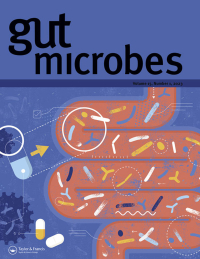
Ast HK, Hammer M, Zhang S, Bruton A, Hatsu IE, Leung B, McClure R, Srikanth P, Farris Y, Norby-Adams L, Robinette LM, Arnold LE, Swann JR, Zhu J, Karstens L, Johnstone JM. Gut microbiome changes with micronutrient supplementation in children with attention-deficit/hyperactivity disorder: the MADDY study. Gut Microbes. 2025 Dec;17(1):2463570. Epub 2025 Feb 18.
Objective: With dual focus on structured, objective quantification of parent observations of child's behavior and identifying behaviors most amenable to change, this report examines Parent Target Problems (PTP) as a secondary outcome in a randomized clinical trial (RCT) of children with attention-deficit/ hyperactivity disorder (ADHD) in which one primary outcome, Clinical Global Impression-Improvement, showed a significant advantage of multinutrients over placebo and the other, Likert-type parent ratings, showed significant improvement in both groups, without significant difference between them.
Method: In a multisite 8-week RCT of broad-spectrum micronutrients ("multinutrients"), parents of children ages 6-12 (N = 126, 73% male, 88% white) with ADHD and emotional dysregulation nominated their child's most concerning problem(s) at baseline and quantified them by frequency, duration, impairment, and consequences. At subsequent visits, parents re-quantified the problem(s). Blinded child psychiatrists independently reviewed the PTPs and rated change at two timepoints compared to baseline. PTPs were grouped into 9 categories. Mean ratings were compared between active and placebo groups and explored by category.
Results: By week 8, a significant separation favored multinutrients: 38% of the multinutrient group were "definitely improved" or better, compared to 25% of the placebo group, and ratings of "no change" or "worse" occurred in 35% with placebo versus 23% with multinutrients (p = 0.04). Inattention (72.2%) and emotional dysregulation (69.1%) were the most frequently reported PTP categories. Inattention and internalizing symptoms improved more with multinutrients than placebo (p = 0.01, d = 0.55; p = 0.03, d = 0.80, respectively). The multinutrient advantage was not significant for 7 other symptoms, including hyperactivity/impulsivity, aggression, autistic symptoms, or emotional dysregulation/irritable oppositionality.
Conclusions: This secondary analysis found that the multinutrients, compared to placebo, were associated with improvements in parental concerns overall, and in two domains specifically: inattention and internalizing symptoms (anxiety/depression), but not in seven domains: hyperactivity/impulsivity, aggression, autistic symptoms or physiological symptoms, peer relationships or emotional dysregulation/irritable oppositionality.
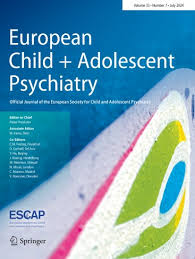
Problems most concerning to parents of children with ADHD and emotional dysregulation in a randomized controlled trial of multinutrients: MADDY secondary analysis
Tost G, Srikanth P, Bruton A, Hatsu IE, Leung BM, Ast HK, Eiterman LP, Robinette LM, Williams C, Gracious B, Eugene Arnold L, Johnstone JM. Eur Child Adolesc Psychiatry. 2024 May 31.
Objectives: The 8-week Micronutrients for ADHD in Youth (MADDY) randomized controlled trial (N = 126, age 6-12) of broad-spectrum multinutrients for ADHD with emotional dysregulation found 3 times as many responders with multinutrients (54%) compared to placebo (18%) by Clinical Global Impression-Improvement (CGI-I). Our primary aim for this analysis tests the hypothesis that those with poor overall diet quality at baseline benefit more. The second aim is to explore whether specific components of diet quality moderate treatment response.
Methods: 124 children (69 multinutrients, 55 placebo) had diet quality assessed using the Healthy Eating Index-2015 (HEI-2015). For each potential moderator, the outcome CGI-I at week 8 (RCT-end), was modeled two ways: (1) as a dichotomous variable: responder/non-responder, with responders defined by a rating of 1 or 2 'very much' or 'much improved,' all else equals non-responder using logistic regression, and (2) as a dimensional improvement outcome from 1 = very much improved to 7 = very much worse, using linear regression.
Results: HEI-2015 total score did not moderate treatment response [odds ratio = 1.00 (95% CI: 0.90,1.10), p = 0.984] or improvement [β = -0.01 (95% CI: -0.06,0.04), p = 0.648]. However, total vegetable intake moderated level of improvement in exploratory analysis [β = -0.48 (95% CI: -0.82, -0.13), p = 0.007]: those with higher baseline vegetable intake showed greater benefit from multinutrients compared to placebo.
Conclusions: Multinutrients may benefit children with ADHD and irritability regardless of overall diet quality. The finding that higher baseline vegetable intake may improve response to multinutrients deserves further exploration, including dietary effect on gut microbiota and absorption of multinutrients and parental factors.
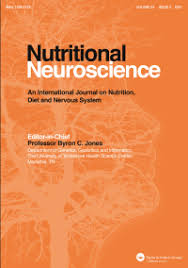
Treatment response to supplemental nutrients for ADHD is independent of diet quality: the MADDY Study RCT
Robinette LM, Hatsu IE, Johnstone JM, Bruton AM, Leung BMY, Arnold LE. Treatment response to supplemental nutrients for ADHD is independent of diet quality: the MADDY Study RCT. Nutr Neurosci. 2024 Apr;27(4):319-328.
The association of household food insecurity with symptoms of attention deficit hyperactivity disorder (ADHD) and emotional dysregulation in children was examined in this study. We utilized baseline data from 134 children aged 6-12 years who were enrolled in a clinical trial investigating multinutrient supplementation as a treatment for ADHD and emotional dysregulation. Household food security status was assessed using the 18-item US Household Food Security Survey Module. The symptoms of ADHD and emotional dysregulation disorders (oppositional defiant disorder (ODD) and disruptive mood dysregulation disorder (DMDD)) were assessed using the Child and Adolescent Symptom Inventory-5 and other comorbid emotional dysregulation symptoms were assessed using the Strengths and Difficulties Questionnaire (SDQ). Multiple linear regression determined associations between household food security status and symptoms of ADHD, ODD and DMDD, emotional symptoms and conduct problems. Household food insecurity was associated with more severe emotional symptoms (β = 2.30; 95% CI = 0.87-3.73; p = 0.002), conduct problems (β = 1.15; 95% CI = 0.01-2.30; p = 0.049) and total difficulties scores (β = 4.59; 95% CI = 1.82-7.37; p = 0.001) after adjusting for covariates (child's sex, parent marital status, household income, parental anxiety and other parental psychopathology). In unadjusted analyses, household food insecurity was also associated with increased ODD (β = 0.58; 95% CI = 0.21-0.95; p = 0.003) and DMDD symptoms (β = 0.69; 95% CI = 0.20-1.19; p = 0.006), but these associations attenuated to non-significance after adjusting for all covariates. Household food insecurity was associated with more severe emotional dysregulation symptoms. Discussing and addressing food insecurity may be appropriate initial steps for youths with ADHD and emotional dysregulation.
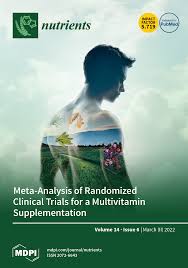
Household Food Insecurity Is Associated with Symptoms of Emotional Dysregulation in Children with Attention Deficit Hyperactivity Disorder: The MADDY Study.
Hatsu IE, Eiterman L, Stern M, Lu S, Johnstone JM, Leung BMY, Srikanth P, Robinette L, Tost G, Odei JB, Gracious BL, Arnold LE. Household Food Insecurity Is Associated with Symptoms of Emotional Dysregulation in Children with Attention Deficit Hyperactivity Disorder: The MADDY Study. Nutrients. 2022 Mar 20;14(6):1306.
Background: Antenatal depression is a risk factor for poor infant outcomes. Broad-spectrum-micronutrients (vitamins and minerals) have shown efficacy in treating psychiatric symptoms in non-pregnant populations and are associated with reduced incidence of adverse birth outcomes, and improvements in neonatal development. We investigated the effects of treatment of antenatal depression with micronutrients above the Recommended Dietary Allowance on infant development compared to treatment with antidepressant medications and controls.
Method: One-hundred-and-three infants were assessed using the Brazelton Neonatal Behavioral Assessment Scale (NBAS) within 28 days of birth: 37 exposed to micronutrients in-utero (50-182 days exposure), 18 to antidepressants in-utero (exposure for full gestation), and 48 controls whose mothers received neither treatment nor experienced depressive symptoms.
Results: Controlling for gestational age and parity, there were significant group differences on habituation, orientation, motor, state regulation, autonomic stability and reflexes (p < .05). Micronutrient-exposed performed better than antidepressant-exposed and controls on habituation, motor and autonomic stability (p < .05), effect sizes ranged 1.0-1.7 and 0.5-1.0, respectively. Antidepressant-exposed performed significantly worse on orientation and reflexes compared to micronutrient-exposed and controls. Micronutrient-exposed had significantly better state regulation compared to antidepressant-exposed. There was an association between micronutrient exposure length and better habituation (r = 0.41, p = .028). Micronutrient exposure was generally identified as a stronger predictor of neonatal performance over maternal depression, social adversity, gestational age and infant sex.
Conclusion: In-utero micronutrient exposure appears to mitigate risks of depression on infant outcomes showing positive effects on infant behavior, on par with or better than typical pregnancies and superior to antidepressants. Limitations include differential exposure to micronutrients/antidepressants and lack of group blinding.
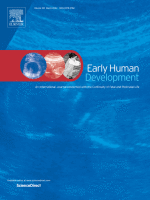
Effect of antenatal micronutrient or antidepressant exposure on Brazelton neonatal behavioral assessment scale (NBAS) performance within one-month of birth
Campbell SA, Bradley HA, Mulder RT, Henderson JMT, Dixon L, Haslett LC, Rucklidge JJ. Effect of antenatal micronutrient or antidepressant exposure on Brazelton neonatal behavioral assessment scale (NBAS) performance within one-month of birth. Early Hum Dev. 2024 Mar;190:105948.
Conclusions
Multinutrients combining 4 or more ingredients, mindfulness, and polyunsaturated fatty acids showed replicated, consistent moderate effects and can be encouraged as secondary treatments in combination with primary treatments or if a primary treatment is not a fit for the participant and their family.
Summary
Attention-deficit hyperactivity disorder (ADHD) affects approximately 5% of children and adolescents globally and
is associated with negative life outcomes and socioeconomic costs. First-generation ADHD treatments were
predominantly pharmacological; however, increased understanding of biological, psychological, and environmental
factors contributing to ADHD has expanded non-pharmacological treatment possibilities. This Review provides
an updated evaluation of the efficacy and safety of non-pharmacological treatments for paediatric ADHD,
discussing the quality and level of evidence for nine intervention categories. Unlike medication, no
non-pharmacological treatments showed a consistent strong effect on ADHD symptoms. When considering broad
outcomes (eg, impairment, caregiver stress, and behavioural improvement), multicomponent (cognitive)
behaviour therapy joined medication as a primary ADHD treatment. With respect to secondary treatments,
polyunsaturated fatty acids showed a consistent modest effect on ADHD symptoms when taken for at least
3 months. Additionally, mindfulness and multinutrient supplementation with four or more ingredients showed
modest efficacy on non-symptom outcomes. All other non-pharmacological treatments were safe; clinicians might
tolerate their use but should educate families of childrenand adolescents with ADHD on the disadvantages,
including costs, burden to the service user, absence of proven efficacy relative to other treatments, and delay of
proven treatment.
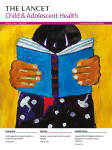
Non-pharmacological interventions for attention-deficit hyperactivity disorder in children and adolescents
Sibley MH, Bruton AM, Zhao X, Johnstone JM, Mitchell J, Hatsu I, Arnold LE, Basu HH, Levy L, Vyas P, Macphee F, Gonzalez ES, Kelley M, Jusko ML, Bolden CR, Zulauf-McCurdy C, Manzano M, Torres G. Non-pharmacological interventions for attention-deficit hyperactivity disorder in children and adolescents. Lancet Child Adolesc Health. 2023 Mar 9:S2352-4642(22)00381-9.
The Micronutrients for ADHD in Youth (MADDY) study was an 8-week double-blind RCT of broad spectrum multinutrients (BSMN) for ADHD with emotional dysregulation in children ages 6–12. Primary outcome Clinical Global Impressions-Improvement (CGI-I) showed 3 times as many responders with BSMN (54%) as placebo (18%). Since diet is the primary source of nutrients intake, and diet quality corresponds with nutritional outcomes, this study seeks to determine the role of baseline diet quality as a moderator of treatment response to test the hypothesis that those with poor diet quality should benefit more.
124 children (69 BSMN, 55 placebo) in the intent-to-treat analysis had diet quality assessed by Healthy Eating Index-2015 (HEI-2015) component and total scores from the VioscreenTM FFQ. Primary outcome was odds of treatment response, defined by a rating of 1 or 2 (very much or much improved) on CGI-I at week 8. Sensitivity analysis used CGI-I at week 8 as a dimensional outcome (from 1 = very much improved to 7 = very much worse). Logistic regressions were conducted for the primary analysis and linear regressions for the sensitivity analysis, with HEI scores entered as potential moderators.
Total HEI-2015 score did not moderate treatment response [odds ratio = 1.00 (95% CI: 0.90,1.10), p = 0.994] or improvement [β= −0.01 (95% CI: −0.06,0.04), p = 0.655]. HEI component scores also did not moderate treatment response, though total vegetable intake moderated level of improvement [β= −0.48 (95% CI: −0.82, −0.13), p = 0.007]: those with higher vegetable intake showed greater improvement with BSMN but not with placebo.
BSMN may benefit children with ADHD and irritability regardless of diet quality. The finding that higher baseline vegetable intake possibly predisposes to improvement with BSMN is puzzling and worth further exploration of potential mechanisms such that a higher vegetable intake may promote the absorption or utilization of the multinutrients.

Diet Quality as a Moderator of Response to Multinutrients for ADHD and Emotional Dysregulation: The MADDY RCT.
Robinette L, Hatsu I, Johnstone J, Leung B, Arnold LE. Diet Quality as a Moderator of Response to Multinutrients for ADHD and Emotional Dysregulation: The MADDY RCT. Curr Dev Nutr. 2022 Jun 14;6(Suppl 1):395.
Background: Parents' lived experiences of having a child with ADHD may shape their decision making regarding ADHD treatment options for their child. The aim of this study was to explore parents' experiences of living with a child with ADHD in the family and how their experiences influence their perspectives on treatment preferences and priorities.
Methods: A phenomenological qualitative design was used. Semistructured interviews were conducted with parents of children with ADHD who were enrolled in a multisite randomized controlled trial. Interviews were transcribed verbatim, and transcripts at each site were double coded. Initial codes were derived directly from the text. Qualitative data were analysed with an inductive approach.
Results: Twenty-three parents were interviewed: eight from Alberta, Canada; eight from Portland, Oregon, USA; and seven from Columbus, Ohio, USA. Among the parents, 69% were married, 86% completed college education and 52% reported household income over $80,000. Among the children, the mean age was 9.6 years (SD = 1.8 years), 78% were boys and 48% were never medicated for their ADHD. Two major themes emerged from the analysis. Theme 1 was 'impact of ADHD on families within and outside the home' with the following subthemes: 'reconfiguring the home life', 'trial-and-error of accommodations at school' and 'responding to social pressures to fit in'. Theme 2 was 'enabling appropriate and accessible treatments for families' with the following subthemes: 'finding the "right fit" with professionals and treatments' and 'factors influencing inequitable access to treatments'.
Conclusions: Parents described shared experiences and identified similar barriers, preferences and priorities for ADHD treatments regardless of demographic differences by site. Families desired access to family-centred, multimodal approaches to ADHD treatment. Further research is needed to identify the specific structural changes to healthcare, services and policies that will better support this approach.
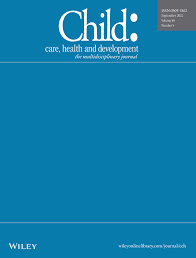
Parents' priorities and preferences for treatment of children with ADHD: Qualitative inquiry in the MADDY study
Lu SV, Leung BMY, Bruton AM, Millington E, Alexander E, Camden K, Hatsu I, Johnstone JM, Arnold LE. Parents' priorities and preferences for treatment of children with ADHD: Qualitative inquiry in the MADDY study. Child Care Health Dev. 2022 Sep;48(5):852-861.
Objective: We investigated whether changes in serum nutrient levels mediate clinical response to a micronutrient intervention for ADHD. Method: Data were compiled from two ADHD trials (8-10 weeks), one in adults† (n = 53) and one in children (n = 38). Seven outcomes included change in ADHD symptoms, mood, overall functioning (all clinician-rated) as well as response status. Change in serum/plasma nutrient levels (vitamins B12 and D, folate, ferritin, iron, zinc, and copper) were considered putative mediators. Results: A decrease in ferritin and an increase in copper were weakly associated with greater likelihood of being identified as an ADHD responder; none of the other nutrient biomarkers served as mediators. Conclusion: Further research looking at nutrients more broadly from other tissues are required to confirm these initial observations of the limited value of nutrient levels in deciphering mechanism of action. Monitoring these biomarkers on their own is unlikely helpful in understanding clinical response to a broad-spectrum micronutrient approach.
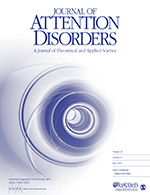
Do Changes in Blood Nutrient Levels Mediate Treatment Response in Children and Adults With ADHD Consuming a Vitamin-Mineral Supplement?
Rucklidge JJ, Eggleston MJF, Boggis A, Darling K, Gorman B, Frampton CM. J Atten Disord. 2021 Jun;25(8):1107-1119. Epub 2019 Nov 9.
Abstract
Objectives
Attention-deficit/hyperactivity disorder (ADHD) is a neuropsychiatric disorder with increasing global prevalence and high heritability commonly diagnosed in childhood. Current pharmaceutical treatment options provide a poor long-term risk: benefit ratio. Nutrition has significant effects on neurological functioning, and increasing evidence exists to support the use of multinutrients as alternative treatment for ADHD. The goal of this study is to assess the efficacy and tolerability of a multinutrient supplement as an alternative treatment for ADHD and co-occurring mood dysregulation symptoms.
Methods
The Multinutrients in ADHD Youth study is a fully-funded, multi-site, randomized double-blinded clinical trial for adolescents ages 6–12 years (n = 135). The study is 16 weeks in total, with an 8-week randomized controlled trial (RCT) followed by an 8-week open label (OL) phase. During the RCT phase, participants are assigned to either the treatment or placebo group at a 3:2 ratio. Study outcomes of ADHD symptoms include child's inattention, hyperactivity and mood dysregulation, which are assessed using validated questionnaires. Outcome data for the OL phase of the study were analyzed using end of RCT phase as baseline given that the RCT component of the study is still blinded.
Results
Preliminary findings based on the OL phase compared ADHD symptoms following 8 weeks of open label supplementation (n = 27 families). A significant decrease in symptom count was found for inattention (P ≤ 0.001), hyperactivity (P ≤ 0.001), ODD (P ≤ 0.001) and DMDD (P ≤ 0.001).
Conclusions
This study is the first adequately powered RCT in North America to investigate the effects of multinutrients supplements on ADHD symptoms among children. Preliminary findings indicate a trend in the improvements of ADHD symptoms of inattention, hyperactivity, ODD and DMDD in the OL phase of the study.
Funding Sources
Foundation for the Center of Excellence in Mental Health, Canada; The Ohio State University Department of Human Sciences, College of Education and Human Ecology; The Ohio State University Wexner Medical Center, Clinical Research Center.
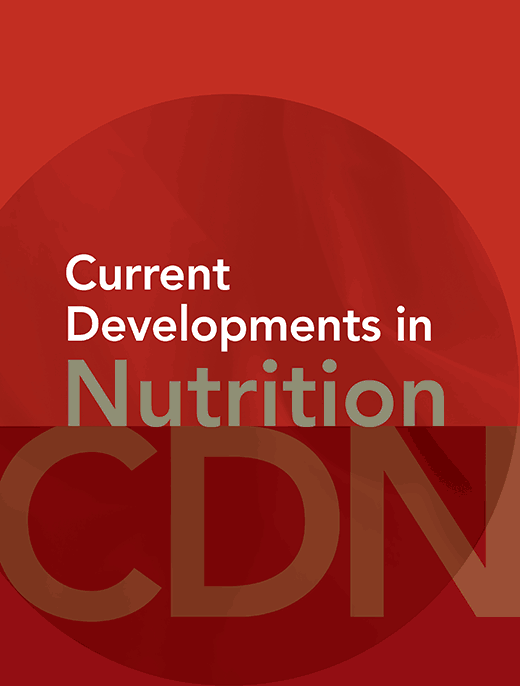
Multinutrients for ADHD Youth (MADDY) Trial: Preliminary Trends for Treatment
Madeline Stern, Leanna Perez, Jeanette Johnstone, Barbara Gracious, Brenda Leung, Eugene Arnold, Gabriella Tost, Irene Hatsu. Current Developments in Nutrition, Volume 3, Issue Supplement 1, June 2019, https://doi.org/10.1093/cdn/nzz050.P16-028-19
Background: Intent-to-treat analyses from a randomized controlled trial showed significant between-group differences favouring micronutrient treatment on the Clinical Global Impression-Improvement, but no group differences on clinician, parent and teacher ratings of overall ADHD symptoms. There was an advantage of micronutrients over placebo in improving overall function, emotional regulation, aggression, and reducing impairment as well as improving inattention based on clinician but not parent observation. No group differences were observed on hyperactive-impulsive symptoms. We investigated predictors of response defined by pre-treatment variables.
Method: We conducted analyses of data from a clinical trial of children (7-12 years) with ADHD, whereby participants were randomized to receive micronutrients or placebo for 10 weeks followed by a 10 week open-label (OL) phase. We included only children who had been exposed to micronutrients for a full 10 week period and demonstrated satisfactory adherence, either in RCT phase (n = 40) or OL phase (those who received placebo during RCT phase; n = 31). Seven outcomes were examined: change in ADHD symptoms (clinician/parent), ADHD responder, overall responder, change in mood, change in functioning, and change in aggression. Demographic, developmental variables, current clinical and physical characteristics, MTHFR genotype at two common variants, and pre-treatment serum/plasma levels (vitamin D, B12, folate, zinc, copper, iron, ferritin, potassium, calcium, magnesium, and homocysteine) were all considered as putative predictors.
Results: Substantial nutrient deficiencies pre-treatment were observed only for vitamin D (13%) and copper (15%), otherwise most children entered the trial with nutrient levels falling within expected ranges. Regression analyses showed varying predictors across outcomes with no one predictor being consistently identified across different variables. Lower pre-treatment folate and B12 levels, being female, greater severity of symptoms and co-occurring disorders pre-treatment, more pregnancy complications and fewer birth problems were identified as possible predictors of greater improvement for some but not all outcome measures although predictive values were weak. Lower IQ and higher BMI predicted greater improvement in aggression.
Conclusions: This study replicates Rucklidge et al. (2014b) showing the limited value of using serum nutrient levels to predict treatment response although we cannot rule out that other non-assayed nutrient levels may be more valuable. Additionally, no specific demographic or clinical characteristics, including MTHFR genetic status, were identified that would preclude children with ADHD from trying this treatment approach.
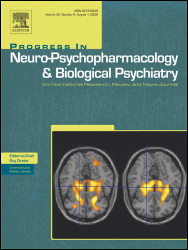
Can we predict treatment response in children with ADHD to a vitamin-mineral supplement? An investigation into pre-treatment nutrient serum levels, MTHFR status, clinical correlates and demographic variables
Rucklidge JJ, Eggleston MJF, Darling KA, Stevens AJ, Kennedy MA, Frampton CM. Can we predict treatment response in children with ADHD to a vitamin-mineral supplement? An investigation into pre-treatment nutrient serum levels, MTHFR status, clinical correlates and demographic variables. Prog Neuropsychopharmacol Biol Psychiatry. 2019 Mar 8;89:181-192.
BACKGROUND:
Evaluation of broad-spectrum micronutrient (vitamins and minerals) treatment for childhood ADHD has been limited to open-label studies that highlight beneficial effects across many aspects of psychological functioning.
METHOD:
This is the first fully blinded randomized controlled trial of medication-free children (n = 93) with ADHD (7-12 years) assigned to either micronutrients (n = 47) or placebo (n = 46) in a 1:1 ratio, for 10 weeks. All children received standardized ADHD assessments. Data were collected from clinicians, parents, participants and teachers across a range of measures assessing ADHD symptoms, general functioning and impairment, mood, aggression and emotional regulation.
RESULTS:
Intent-to-treat analyses showed significant between-group differences favouring micronutrient treatment on the Clinical Global Impression-Improvement (ES = 0.46), with 47% of those on micronutrients identified as 'much' to 'very much' improved versus 28% on placebo. No group differences were identified on clinician, parent and teacher ratings of overall ADHD symptoms (ES ranged 0.03-0.17). However, according to clinicians, 32% of those on micronutrients versus 9% of those on placebo showed a clinically meaningful improvement on inattentive (OR = 4.9; 95% CI: 1.5-16.3), but no group differences on improvement in hyperactive-impulsive symptoms (OR = 1.0; 95% CI: 0.4-2.5). Based on clinician, parent and teacher report, those on micronutrients showed greater improvements in emotional regulation, aggression and general functioning compared to placebo (ES ranged 0.35-0.66). There were two dropouts per group, no group differences in adverse events and no serious adverse events identified. Blinding was successful with guessing no better than chance.
CONCLUSIONS:
Micronutrients improved overall function, reduced impairment and improved inattention, emotional regulation and aggression, but not hyperactive/impulsive symptoms, in this sample of children with ADHD. Although direct benefit for core ADHD symptoms was modest, with mixed findings across raters, the low rate of adverse effects and the benefits reported across multiple areas of functioning indicate micronutrients may be a favourable option for some children, particularly those with both ADHD and emotional dysregulation. Trial registered with the Australian New Zealand Clinical Trials Registry ACTRN12613000896774.
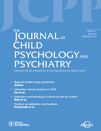
Vitamin-mineral treatment improves aggression and emotional regulation in children with ADHD: a fully blinded, randomized, placebo-controlled trial.
Rucklidge JJ, Eggleston MJF, Johnstone JM, Darling K, Frampton CM. J Child Psychol Psychiatry. 2017 Oct 2.
An 11-year-old boy with a 3-year history of mental illness and psychiatric medication treatment was transitioned to a micronutrient formulation co-developed† by Hardy Nutritionals® founder David Hardy. The boy was diagnosed with multiple psychiatric disorders, including obsessive-compulsive disorder, generalized anxiety disorder, social anxiety disorder, and psychosis—not otherwise specified. The boy’s anxiety, obsessive-compulsive, and psychotic symptoms decreased significantly when he took the vitamin-mineral formulation, and his progress was maintained through a 4-year follow-up. A cost comparison revealed that the boy’s micronutrient treatment cost less than 1% of his former inpatient mental health care.

Efficacy and cost of micronutrient treatment of childhood psychosis.
Rodway M, Vance A, Watters A, Lee H, Bos E, Kaplan BJ. BMJ Case Reports. 2012 Nov 9;2012.
Scientists analyzed data from 120 children with pediatric bipolar disorder who were treated with a micronutrient formulation co-developed† by Hardy Nutritionals® founder David Hardy for at least 6 months. 24% of these children also had a diagnosis of attention deficit hyperactivity disorder (ADHD). Their results were compared with an additional 41 children who were diagnosed with ADHD alone. Children with a bipolar diagnosis showed a 59% decline in symptoms, whereas children with ADHD showed a 40% decrease in symptoms. The duration of symptom reduction suggests that benefits of micronutrient treatment were not attributable to placebo or expectancy effects. Of those taking psychiatric medications, more than half were able to completely discontinue them over a 6-month period. Medication use by the remainder of children was reduced by 74% during the same time period.

Database analysis of children and adolescents with bipolar disorder consuming a micronutrient formula.
Rucklidge JJ, Gately D, Kaplan BJ. BioMed Central Psychiatry. 2010 Sep 28;10:74.
Researchers describe a 12-year-old boy who was diagnosed at age 6 with bipolar disorder. His diagnosis evolved to include psychotic features, generalized anxiety disorder and obsessive-compulsive disorder. Although he was treated with psychiatric medications for 6 years, he continued to experience many debilitating mood, anxiety, and obsessive-compulsive symptoms. During treatment with a micronutrient formulation co-developed† by Hardy Nutritionals® founder David Hardy, the boy’s global functioning notably improved. He began interacting more appropriately with peers, remained calm and playful throughout most of the day, slept throughout the night, remained focused and efficient while completing schoolwork, and experienced decreased compulsions. Eventually, his hallucinations also ceased and all diagnoses fully remitted. His symptoms remained stable during a 14-month follow-up period.
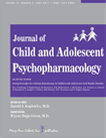
Multinutrient supplement as treatment: literature review and case report of a 12-year-old boy with bipolar disorder.
Frazier EA, Fristad MA, Arnold LE. Journal of Child and Adolescent Psychopharmacology. 2009 Aug;19(4):453-60.
Researchers treated nine unselected children with mood and behavioral problems with a micronutrient formulation co-developed† by Hardy Nutritionals® founder David Hardy. The children’s psychiatric diagnoses included attention deficit hyperactivity disorder, bipolar disorder, depression, oppositional defiant disorder, obsessive-compulsive disorder, generalized anxiety disorder, Asperger syndrome, and Prader-Willi syndrome. After a minimum of 8 weeks of micronutrient treatment, the children’s behavior improved significantly in the following areas: anxious and depressed mood, thought problems, interpersonal relationship problems, attention problems, social problems, withdrawn behavior, disruptive behavior, delinquent behavior, aggressive behavior, and self-harm behavior.

Improved mood and behavior during treatment with a mineral-vitamin supplement: an open-label case series of children.
Kaplan BJ, Fisher JE, Crawford SG, Field CJ, Kolb B. Journal of Child and Adolescent Psychopharmacology. 2004 Spring;14(1):115-22.
Researchers describe two medication-free boys with unstable mood and explosive rage who took a micronutrient formulation co-developed† by Hardy Nutritionals® founder David Hardy followed by reversal and re-treatment. The boys’ diagnoses included pervasive developmental disorder with Asperger characteristics, attention deficit hyperactivity disorder, obsessive-compulsive disorder, and autism. Both boys benefited significantly from the micronutrient formula: mood, angry outbursts, delinquent behavior, social and attention problems, and anxious/obsessional symptoms improved when initially treated, returned when they discontinued treatment, and remitted when the micronutrient treatment was reintroduced. During a follow-up of over 2 years, both boys continued to be stable while taking the micronutrient treatment.

Treatment of mood lability and explosive rage with minerals and vitamins: two case studies in children.
Kaplan BJ, Crawford SG, Gardner B, Farrelly G. Journal of Child and Adolescent Psychopharmacology. 2002 Fall;12(3):205-19.
After observing a 10-year-old boy's dramatic response to a micronutrient formulation co-developed† by Hardy Nutritionals® founder David Hardy, Dr. Charles Popper, a psychiatrist and psycho-pharmacologist at Harvard Medical School, treated 22 additional bipolar disorder-diagnosed patients in his private practice (10 adults, 9 adolescents, and 3 preadolescents) with the micronutrients. Nineteen of the 22 patients (86%) showed a positive response to micronutrient treatment. Of the 15 patients being treated with medications when they began the nutritional supplement, 11 patients remained stable during a follow-up period of 6 to 9 months without psychiatric medications.
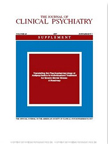
Do vitamins or minerals (apart from lithium) have mood-stabilizing effects?
Popper CW. The Journal of Clinical Psychiatry. 2001 Dec;62(12):933-5.